In the depths of the ocean, where words can’t be heard, divers use the universal language of hand signals to communicate. This silent way of speaking isn’t just for convenience, it’s essential for safety, teamwork, and sharing the magic of the underwater world. Scuba diving hand signals are more than just simple gestures; they’re a lifeline. With them, divers can show how much air they have, point out amazing sea creatures, or let others know it’s time to go up. Knowing and using these signals the right way is important for every diver, whether it’s your first time in the water or you’ve done hundreds of dives.
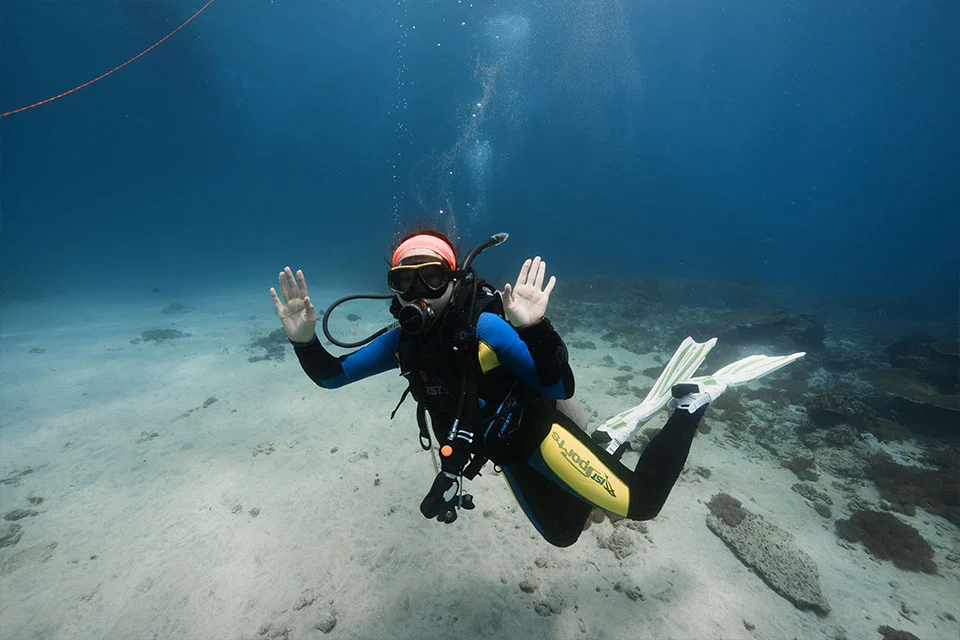
The Silent Conversation
Underwater, the noise of the world disappears, leaving a peaceful silence where divers rely on hand signals to communicate. Hand signals were created out of necessity, allowing divers to “speak” using clear, universal movements. This silent language is a powerful example of how people adapt and find ways to communicate, even without words. It shows that a real connection doesn’t always need sound, just understanding and teamwork.
The Basics of Scuba Diving Hand Signals
Diving hand signals are the ABCs of underwater communication, ensuring safety and coordination among divers. Here’s a glimpse into some essential gestures:
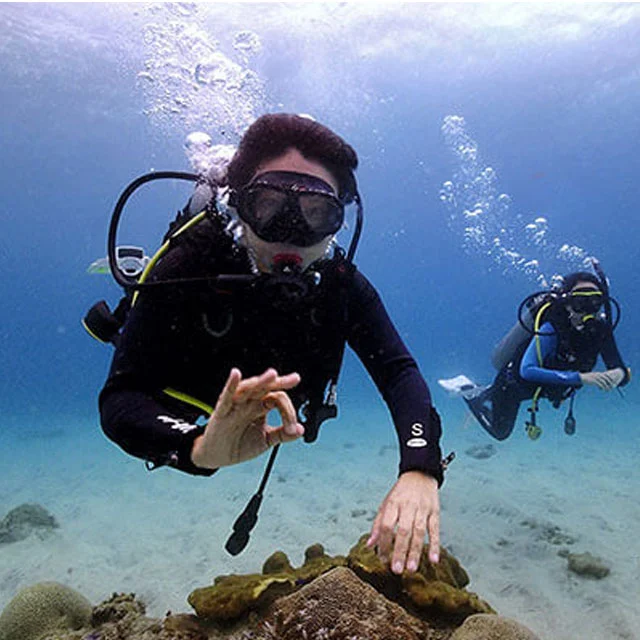
OK Signal
Forming a circle with the thumb and index finger, with the other three fingers extended, signifies that everything is alright. This signal is used to ask and answer the universal question of well-being: “Are you OK?”
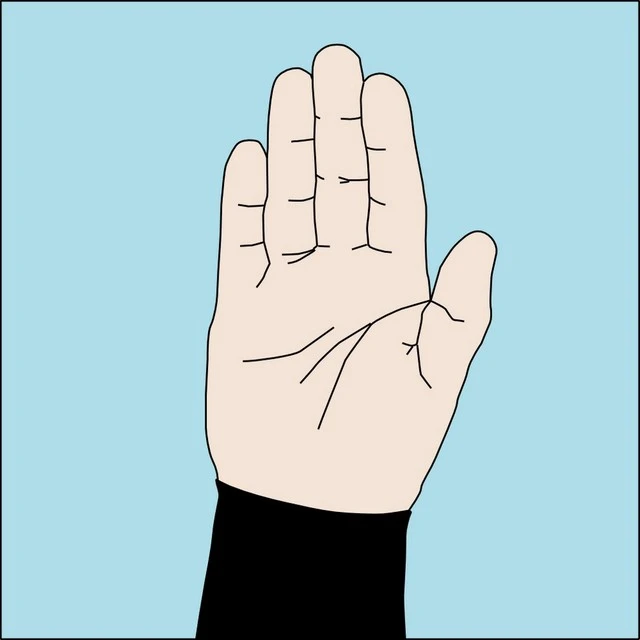
Stop Signal
Extending a flat hand towards another diver indicates a need to pause or stop. This could be for a variety of reasons, from needing to check equipment to spotting something interesting or dangerous.

Ascend Signals
Pointing upwards with the thumb signifies the need to ascend. These gestures help divers communicate their next move clearly.

Descend Signal
Extend your thumb downwards. Then, move your hand in a downward motion. This gesture is often used to signal or emphasize a downward movement or direction.
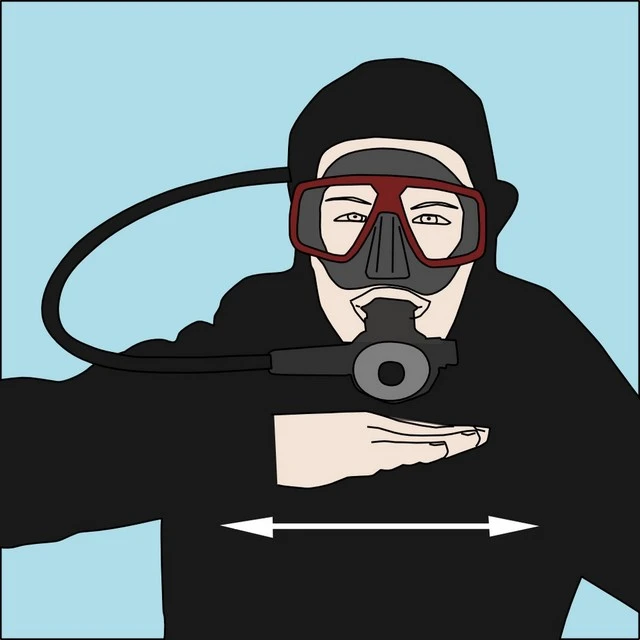
Low on Air
Placing a flat hand across the throat signals that a diver’s air supply is running low, a critical piece of information that ensures timely and safe ascent to the surface.
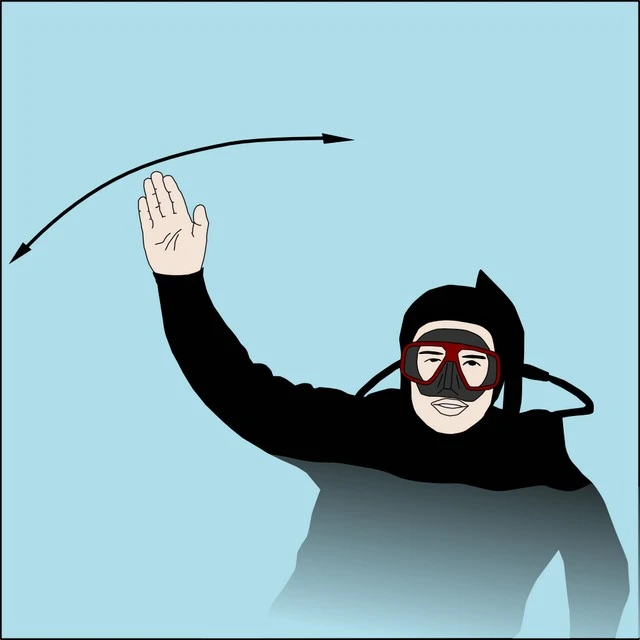
Emergency! Help me
Waving one or both arms in a wide arc above your head. This action is designed to be visible from a distance, making it easier for others to notice that you are in distress.
Integrating these signals into the fabric of a dive not only ensures safety but also enriches the diving experience, allowing divers to share discoveries and navigate challenges together.
Advanced and Fun Signals
Once the fundamental signals are second nature, divers often learn more nuanced gestures that enable them to share the excitement of their discoveries or specific situations underwater:
These advanced signals not only add depth to the dive experience but also foster a sense of community and shared joy among divers as they explore the underwater world together.
Custom Signals: When Standard Gestures Aren’t Enough
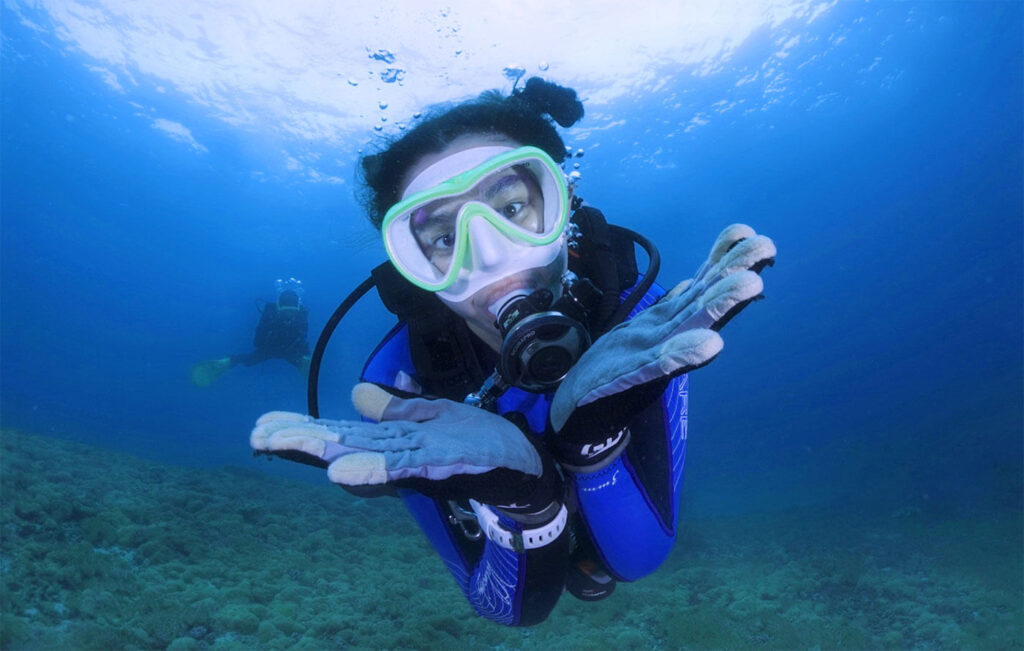
Divers often find themselves in situations or develop inside jokes that standard signals can’t cover. This leads to the creation of custom gestures, a fun and creative aspect of diver communication:
- Custom Creature Signals: Divers encountering rare or specific creatures might develop their own signals to point them out in future dives.
- Inside Jokes and Gestures: Dive groups often come up with their own humorous signals, strengthening bonds and making each dive with familiar companions even more enjoyable.
These custom signals are a testament to the creativity and camaraderie that diving fosters, making each dive not just an exploration of the underwater world but also a deep dive into human connection.
Learning and Mastering Scuba Diving Hand Signals
Learning and mastering scuba diving hand signals is essential for safe and effective underwater communication. These signals enable divers to convey important information, coordinate actions, and respond to emergencies when verbal communication is not possible. Consistent practice, both on land and during dives, helps make these signals second nature, enhancing safety and enjoyment for all divers.
For a comprehensive visual guide to essential scuba diving hand signals, you may find this video helpful:
FAQs about Scuba Diving Hand Signals
The world of Scuba Diving Hand Signals is more than a method of communication, it’s a symbol of the unspoken bond that divers share. Each gesture carries the weight of trust, safety, and shared excitement, connecting divers across cultures and languages in the universal pursuit of underwater discovery. As we explore the depths of the ocean, these silent conversations remind us of our innate ability to connect, adapt, and share the profound beauty of the world beneath the waves.
Share this Article